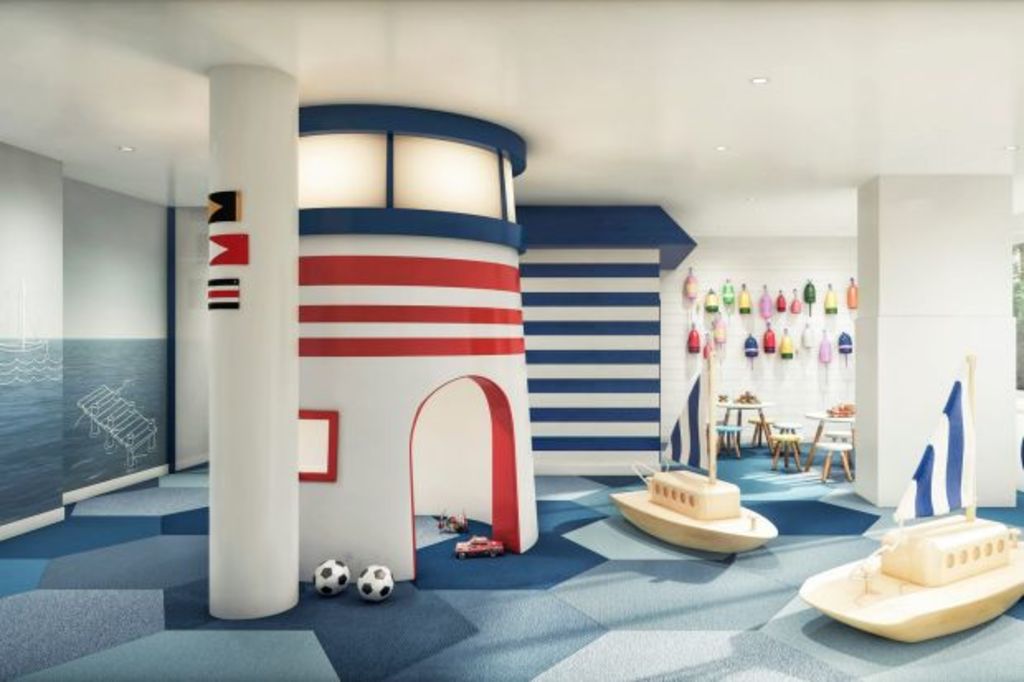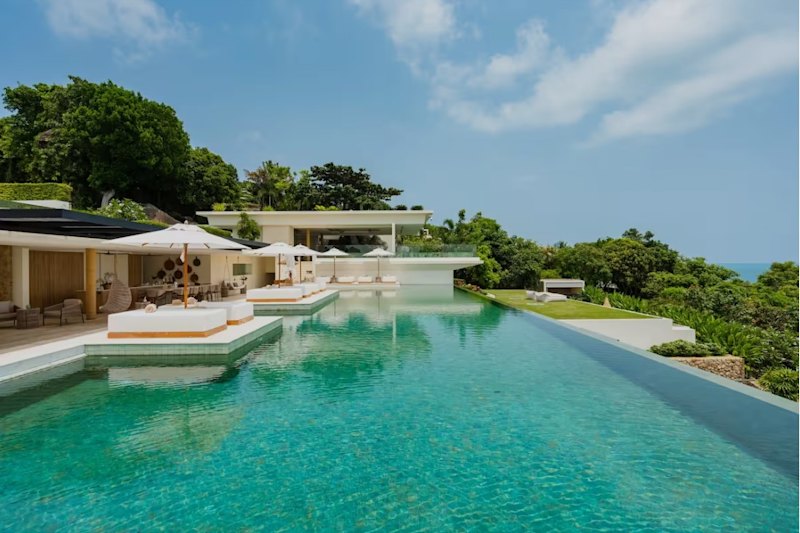Are private playrooms the new norm in luxury apartment blocks?

There’s a working lighthouse and a clam shack covered in fishing buoys near the Battery Park City waterfront in New York City. You won’t find the spot on any tourist map; the nautical wonderland is tucked away in a luxury apartment building called River & Warren, one of a growing number of high-end condominiums offering private playrooms where children can let their imaginations run wild.
Nancy J. Ruddy is managing principal of the architecture and interior design firm CetraRuddy, which designed the beach-themed space. She says playrooms are becoming an important amenity in luxury residential buildings.
“Fifteen years ago, playrooms were simple rooms with linoleum floors and a few toys,” Ruddy says. “Today they are much more sophisticated.”
The firm has designed playrooms around themes including safari, farming, forests and fishing lakes. Some relate directly to the buildings in which they are located. For example, a refurbished 1929 apartment block called Walker Tower features a miniature city block as it would have appeared in that era, complete with brownstones, vegetable stores and vintage cars.
Another, in the neighbourhood of the Lincoln Centre for the Performing Arts, has a music-themed play space with carpet fashioned as a piano keyboard. CetraRuddy currently is working on plans for a room that will make its little visitors feel as though they are walking through tall grass, complete with oversized bugs, butterflies and other animals.
“The most important aspect of a children’s playroom is to create a backdrop for creative play.”
The designs include plenty of space for playing on the floor, tricycle tracks and lounging. Writing walls and level changes are popular features. The one thing you won’t find in a CetraRuddy-designed playroom? TV or movie themes. “Children are filled with wonder and can be inspired by sophisticated environments,” Ruddy says.
US property developer Toll Brothers City Living has been incorporating children’s playrooms into its apartment buildings for more than a decade.
The company’s New York president, David Von Spreckelsen, links the rise of children’s playrooms in apartment buildings to a shift towards more families choosing to live in the inner city.
“Benefits are numerous,” Von Spreckelsen says. “For children, these designated kid-friendly areas give them a place to interact with friends and more room to be messy, and for adults it helps keep the mess out of their homes.”
New York’s harsh weather makes these indoor spaces even more useable – and valuable.
Toll Brothers’ condo playrooms include a train with a seat for the engineer and caboose at 1400 Hudson, a new apartment building in Hoboken. At the nearby 1450 Washington development, the firm engaged the services of a custom fly fishing boat company from Idaho to construct a child-sized boat, the SS Friend Ship.
Henry Waller, the vice president for Toll Brothers City Living, says playrooms are not only great for children on rainy days; they are also a major drawcard for prospective buyers.
“It’s a strong image. They may not remember the building, but they’ll remember the boat,” Waller says.
In Australia, the luxury indoor playroom craze hasn’t made its way into apartment projects yet but developers are working harder to spruik their buildings’ family-friendly credentials.
Developer Crown Group reports the beanbags in the media rooms at Top Ryde City Living in Sydney are regularly occupied by youngsters playing PlayStation with their friends, while the music rooms, resort-style pools, play areas and parks in its multi-residential projects are especially popular with youngsters.
Crown Group’s global head of sales and marketing, Julian Sedgwick, says more Australian families are choosing to live in apartments, and this needn’t mean sacrificing a connection with nature.
What’s next for the trend? In New York, CetraRuddy is also developing “tween rooms” – spaces where 10 to 15-year-old residents can hang out, do their homework and be with their friends, as Ruddy explains.
“We design these as fun, cool spaces that don’t feel like they were decorated by their parents. It is their own clubhouse.”
We recommend
We thought you might like
States
Capital Cities
Capital Cities - Rentals
Popular Areas
Allhomes
More







